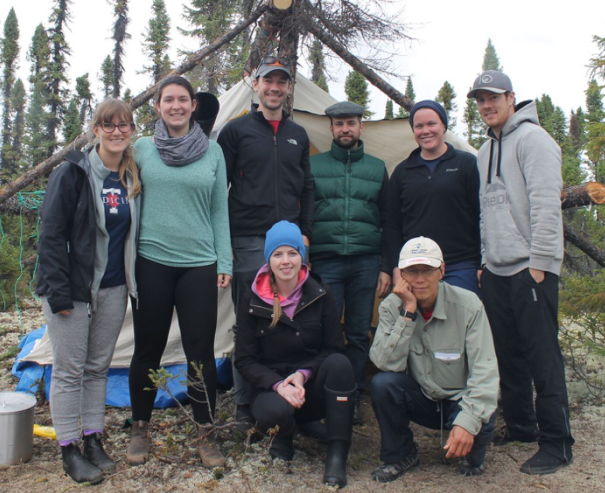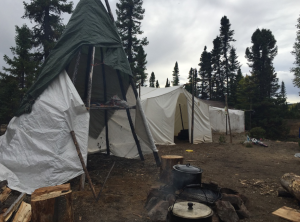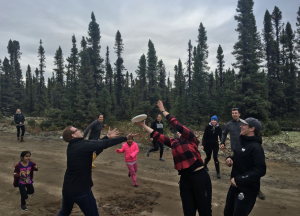Submitted by Mike Curran, Mark McKelvie, and Dr. Michael Jong
Diabetes is an emerging chronic disease among the Innu of Labrador that is quickly growing in prevalence. In the Innu, prevalence peaks at 45-49 years of age, much younger than the prevalence rates seen in non-aboriginal populations. In the recent years the Innu population in the Upper Lake Melville area has seen an 89% increase in diabetes prevalence, from 9,489 per 100,000 in 2005 to 17,932 per 100,000 in 2008. This trend is expected to continue given the congruently increasing risk factors seen in the population; obesity, sedentary lifestyles and poor eating patterns.
The objective our project is to determine whether the promotion of Nutshimit (the practice of traditional activities and consumption of traditional foods) is a viable approach to prevention and management of diabetes among Labrador Innu.
Thanks to IGA funding, we were able to:
- Hire an Innu research partner
- Send our research team to travel to the land with the Innu providing additional context to the study
- Help our research team give back to the participants in the form of activities and education on the land
- Provide necessary recording equipment to perform the study
- Provide a prize draw to entice participants to come forward to share their stories
We collected the data for our project during the Sheshatshiu Community Gathering that is held on the traditional lands of Gull Island each fall. Over 200 tents are set up for 1-2 weeks; members either live on the land or visit during the Gathering. Buses bring members unable to stay on the land daily (this includes elders and those with chronic illnesses). Activities range from traditional living to live entertainment with music and comedy during the gathering.
Our research team spent seven days on the land, living in traditional tents. The group joined the medical contingent, offering medical support and teaching children about sports and a healthy lifestyle. Three of the seven days were dedicated to the study, where we met with family elders, heard many stories, and conducted focus groups.
In the future, we will draft a research paper to present to the community and later submit for publication. We will also be presenting our results at a medical conference.



